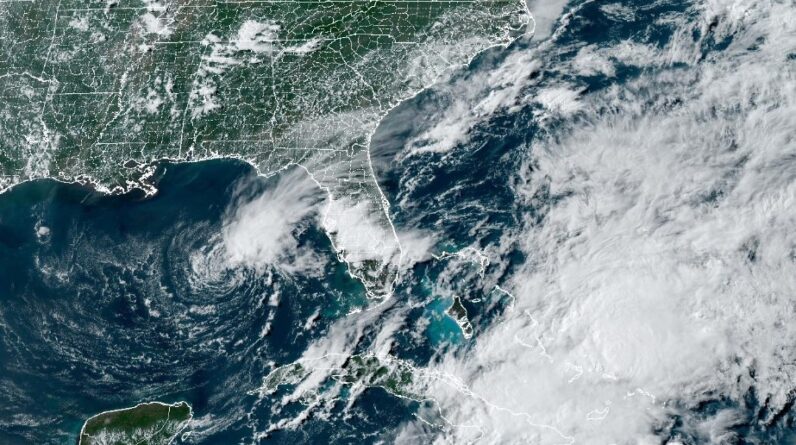
[ad_1]
GOES-East – Sector view: Tropical Atlantic at 5:57 p.m. EDT.
Source – NOAA/GOES East
Tropical Storm Arlene, located west of Florida, is expected to dissipate as it drifts south toward Cuba.
According to the 4:00 p.m. CDT advisory from the National Hurricane Center, Arlene was about 240 miles (390 kilometers) west of Fort Myers, Florida, moving southeast toward Cuba at seven miles per hour,
The storm began as a cluster of showers and thunderstorms over the central Gulf of Mexico on Thursday and was classified as a tropical depression. By Friday afternoon, it gained some strength over the warm waters of the Gulf.
“Although the storm has strengthened slightly, we still expect Arlene to weaken soon due to increasing wind shear and dry air,” the Hurricane Center wrote in a discussion at 1 p.m. Friday.
With sustained winds of 40 mph (65 kph), Arlene is expected to remain far enough off the western peninsula of Florida for any serious impacts, although some of its moisture may contribute to heavy downpours into the weekend.
“Rainfall amounts of 1 to 2 inches with localized higher amounts up to 5 inches are possible through Saturday across portions of the central and southern Florida Peninsula,” the Hurricane Center wrote. “This rainfall is not directly related to Tropical Storm Arlene. Regardless, the heavy rainfall could lead to isolated flash, urban, and small stream flooding impacts.”
Technically, Arlene is the second tropical cyclone to reach tropical storm strength this year. In May, the NHC announced that it had determined that a storm that formed off the northeastern United States in mid-January was a subtropical storm, making it the Atlantic’s first cyclone of 2023.
n late May, the National Oceanic and Atmospheric Administration (NOAA) predicted there would be a “near-normal” Atlantic Hurricane season this year with 12 to 17 named storms.
However, NOAA did not express a great deal of certainty in its forecast this year, saying there was a 40 percent chance of a near-normal season, the caveat being that there’s more uncertainty in this year’s seasonal forecast than normal because of unusually warm temperatures in the Atlantic.
However, an El Niño event is also developing, which tends to reduce storminess. Forecasters say it’s unclear which influence will have a greater effect on overall storm activity in the coming months.
“It’s definitely kind of a rare setup for this year. That’s why our probabilities are not 60% or 70%,” NOAA lead hurricane seasonal forecaster Matthew Rosencrans said at a Thursday news conference on May 25, according to the Associated Press. “There’s a lot of uncertainty this year.”
[ad_2]
Source link






